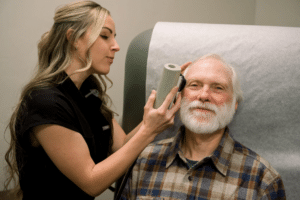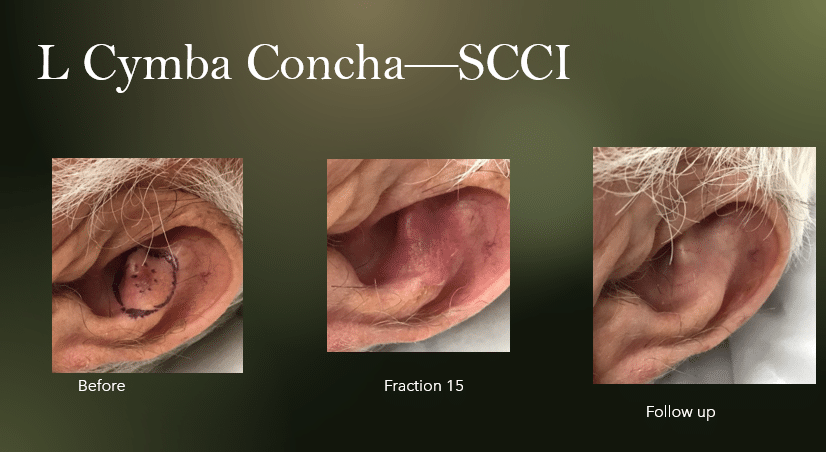Aspen Dermatology is proud to offer the non-surgical, gold-standard treatment for non-melanoma skin cancer

Superficial Radiation Therapy (IGSRT) for Skin Cancer: A Safe and Effective Treatment Option

Superficial Radiation Therapy (IGSRT) is a non-invasive treatment for non-melanoma skin cancers, such as basal cell carcinoma and squamous cell carcinoma. IGSRT uses low-energy X-rays to target cancerous cells on the surface of the skin, providing an effective alternative to surgical procedures. This treatment is especially suitable for patients who prefer a non-surgical approach, have tumors in sensitive areas, or have a high risk of surgical complications.
Benefits of Superficial Radiation Therapy:
- Non-Invasive: IGSRT does not require cutting or stitches, making it a painless option with minimal recovery time.
- Precision: The treatment targets only cancerous cells, preserving surrounding healthy tissue.
- Cosmetic Outcomes: IGSRT minimizes scarring and other cosmetic concerns compared to traditional surgery.
- Convenience: The therapy is typically completed in multiple short sessions, with each session lasting just a few minutes.
- Suitable for Sensitive Areas: Ideal for treating skin cancer on the face, ears, scalp, and other areas where surgery may be challenging.
How IGSRT Works?
IGSRT involves using a specialized machine that emits low-energy X-rays directed precisely at the skin cancer site. The X-rays penetrate only a few millimeters into the skin, effectively destroying cancerous cells while sparing deeper tissues. Most patients experience little to no discomfort during treatment and can resume normal activities immediately after each session
Who is a Good Candidate for IGSRT?

Superficial Radiation Therapy is suitable for patients with:
- Non-melanoma skin cancers (basal cell carcinoma or squamous cell carcinoma).
- Tumors located in cosmetically sensitive or hard-to-treat areas.
- A preference for non-surgical treatment.
- A history of surgery complications or contraindications to anesthesia.
Frequently Asked Questions About Superficial Radiation Therapy (IGSRT)
IGSRT is primarily used to treat non-melanoma skin cancers, including basal cell carcinoma and squamous cell carcinoma. It is not typically used for melanoma.
The number of sessions varies depending on the size and depth of the tumor, but most patients require a series of treatments, usually spread over several weeks.

IGSRT is generally painless. Patients might feel a slight warming sensation during the treatment, but there is no cutting, bleeding, or anesthesia involved.
Side effects are usually mild and localized to the treatment area. They may include redness, dryness, or a sunburn-like effect on the skin. These effects typically resolve on their own shortly after the completion of therapy.
IGSRT is highly effective for treating non-melanoma skin cancers, with cure rates comparable to surgical options. It provides an excellent alternative for patients who cannot or prefer not to undergo surgery.
IGSRT has 99%+ cure rate, effective for treating non-melanoma skin cancers, with cure rates comparable to surgical options. It provides an excellent alternative for patients who cannot or prefer not to undergo surgery.
More than 66,000 patients have been successfully treated with GentleCure.
Patients report being satisfied with GentleCure (Image-Guided SRT). In a survey of more than 12,000 patients who completed treatment, 99.9% reported being happy with their treatment decision and said they would recommend GentleCure (Image-Guided SRT) to others.
Visit GentleCure.com/Patient Stories to hear from some of them.
Treatment Results - Seeing is believing!
No two cases of skin cancer are the same, so treatment results may vary from patient to patient. But the pictures below are typical of the results seen by patients who have received GentleCure (Image-Guided SRT).








For more information, please visit www.GentleCure.com

